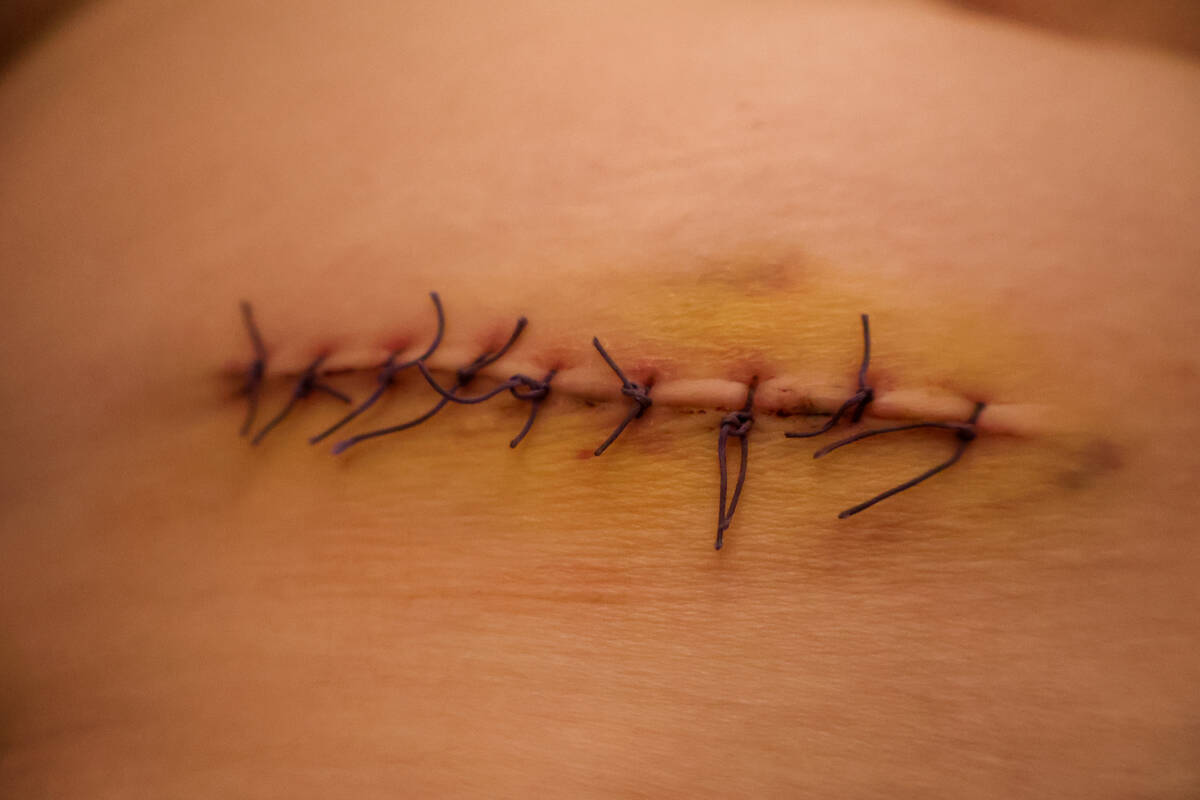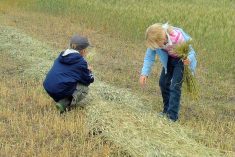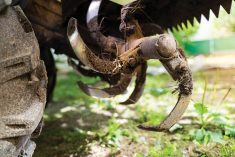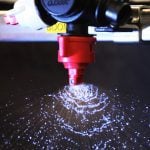Farmers of all different commodities are intimately familiar with personal protective equipment (PPE). Everything from work gloves and steel-toed boots to respirators and coveralls, all farms have spent a small fortune to keep everyone well equipped with the items they need to reduce the risk of injury or illness.
Since the beginning of the COVID-19 pandemic, there has been a considerable increase in PPE use across the board, including on farms. The proper care, use and disposal of PPE are critical to personal safety and health and the safety and health of workers, family members and, even, the general public.
Read Also

The issue with scar tissue
Without a healthy amount of movement, friction and influence during the healing process, scar tissue may later disrupt how the body moves around it, so maintenance is needed as soon as an incision or wound heals over, Kathlyn Hossack writes.
When performing regular farming activities, it’s essential to perform a hazard assessment to identify what type of PPE is needed to protect each task’s risks. During COVID-19, this is no different. What is different is there is an additional layer of protection required based on factors such as the ability to physical distance and the number of people in any given area.
Typical types of PPE used in the agricultural sector during the pandemic are face coverings, medical masks, N95 respirators, respiratory equipment and gloves. Care, use and disposal of PPE are ideally the same during the pandemic as before, but there is more focus on hygiene and prevention of transmission of the COVID-19 virus.
COVID-19 hygiene
According to the Public Health Agency of Canada, the fundamentals of hygiene during the pandemic include the following:
- Wash your hands often with soap and water for at least 20 seconds, or use an alcohol-based hand sanitizer containing at least 60 per cent alcohol,
- Cough and sneeze into a tissue or the bend of your arm,
- Avoid touching your face with unwashed hands, and
- Dispose of used tissues in a lined waste container and then wash your hands.
Hygiene must be practised before and after handling any PPE.
PPE care and use
In general, all PPE should be inspected before each use. Things to look for include broken straps, holes and cracks. Defective PPE must be repaired or replaced to be effective. Reusable PPE such as respiratory equipment should be cleaned after use and stored according to manufacturer instructions.
PPE must be properly used to be effective. It’s best to follow the manufacturer’s user instructions.
For example, a face covering or medical mask worn with the nose sticking out is not effective. These must be worn so the nose and mouth are entirely covered, tucked under the chin, and fitted around the bridge of the nose. Many disposable face coverings have a metal strip that helps create a good fit around the nose’s bridge.
Respiratory equipment must be fit tested to the user, and users should be clean shaven to ensure a good seal. It’s essential to use the proper type of filter cartridge to protect the user from the identified hazards.
Latex or nitrile gloves are commonly used as general PPE during the pandemic. (Latex gloves are clear or white and nitrile ones are blue.) Some people have a latex allergy, so keep that in mind when selecting which gloves to purchase.
Remember, do not reuse disposable PPE such as medical masks.
PPE disposal
Proper disposal of PPE will help prevent the transmission of the COVID-19 virus. PPE must be safely removed from the body and placed directly in the garbage. Avoid contact with the inner surface of a mask or face covering. Make sure reusable, cloth, face coverings are laundered regularly.
Contamination often occurs if gloves are removed incorrectly. The proper removal process includes the following:
- Pinch and hold the outside of the glove near the wrist area,
- Peel downward, away from the wrist, turning the glove inside out,
- Pull the glove away until it is removed from the hand and hold the inside-out glove with the gloved hand,
- With your ungloved hand, slide finger(s) under the wrist of the remaining glove, taking care not to touch the outside of the glove,
- Again, peel downwards, away from the wrist, turning the glove inside out,
- Continue to pull the glove down and over the inside-out glove held in your gloved hand, and
- Following this procedure will ensure both gloves are inside out, one glove enveloped inside the other, with no contaminant on bare hands.
These instructions are adapted from ‘how to safely remove disposable gloves’ on the Globus Group website.
Safe care, use and disposal of PPE will help to prevent the spread of the COVID-19 virus and ensure a productive work environment. For more information, contact the Canadian Agricultural Safety Association or your provincial agricultural safety association.















